Have you ever thought about how the world looks to a horse? What colors can horses see? What color can’t they see?
Do you sometimes worry your horse may spook at bright colors such as red or bright orange?
In the equestrian world, there are a lot of myths about equine vision, including about their ability to see colors.
Some people think that horses like to drink more out of blue buckets and less out of red buckets. Some folks are very sure that their horses like a certain color or are more scared of a particular color.
Some people think that horses only see things in black and white, like when television and movies first came out.
That said In this article, I’ll do my best to answer all your questions about horse color vision. Find out what colors horses can and cannot see, why that is the case, and more about the horse’s eyes and the structures that enable them to perceive color, along with answers to other frequently asked questions, in the faq section.
Research On Horse Color Perception
A lot of research and studies have been done on how horses see and how they recognize color.
Over the years, the conclusions of these many studies and tests have sometimes been comparable, backed up evidence for each other, or have provided completely different findings.
As a result, experts believe that further study on horse eyesight and colors horses can see is needed.
Despite the need for greater research, there are a few fundamental beliefs that are accepted by most experts.
Are Horses Color Blind Or Can Horses See Color?

Do horses see colors or just shades of gray? No doubt you’re curious.
Some experts think that horses are colorblind, just like other mammals, and can only tell the difference between gray and bright colors.
While many scientists hold this view, many horse and dog owners disagree based on their pets’ actual reactions to different colors.
Most studies show that horses can see more colors than just the black and white grayscale.
Can Horses See All Colors?

No, horses do not see all the colors. It’s important to keep in mind that horses don’t see colors as well as we do.
Horses can’t see as many colors as we can either. Some colors humans see look grey to horses.
Even though horses can’t see every color, they can see more than just grey, black, and white which is called monochromatic vision.
Some studies have found that horses have a sort of red-green color blindness similar to that a human can have.
What Colors Do Horses See?

So you want to know what colors horses can see, right?
Except that horses cannot see red, there is no definite answer.
Experts believe that horses have dichromatic color vision, while humans have trichromatic color vision. “di” for seeing 2 wavelengths of light color and “tri” for seeing 3 wavelengths of color light.
At first, I thought the three colors of light in our trichromatic vision were red, yellow, and blue, like the three primary colors, because the primary colors can be mixed to make other colors.
But there is more to it than that. For most people, red, blue, and green are the three trichromatic colors. All the other colors we can see in the world are made up of these three colors of light.
People say that horses can’t see red wavelengths, only green and blue. And there’s something else. The green wavelength is different from what we see; it is more of a yellow green.

So they see more shades of grey, black, white, yellow, blue, and greenish yellowish colors. Also, the blue doesn’t look as bright as the blues we see.
Neitz found that the ponies’ eyes responded to blue and green but not to red. Using the computer data, he constructed an equine color wheel showing that the horse’s version of green is different from ours. “They have cones like our blue-sensitive ones,” says Neitz, “and they have a cone [class] that’s similar but not identical to our green-sensitive ones. Those cones perceive more of a yellow color.”
Equus Magazine
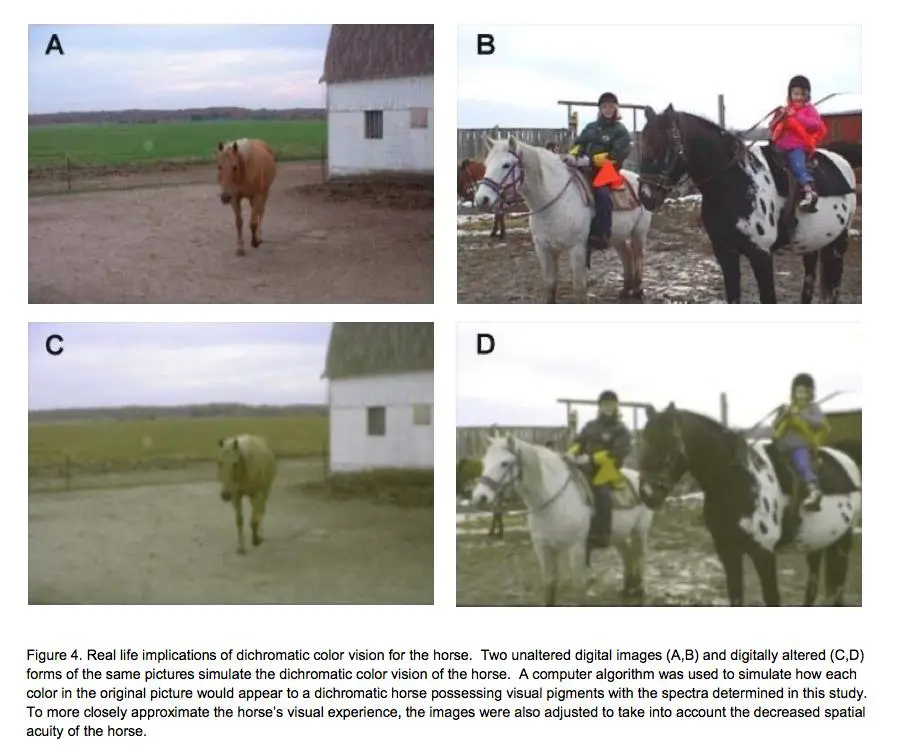
These Images Are From:
Carroll, J., Murphy, C. J., Neitz, M., Ver Hoeve, J. N., Neitz, J. (2001). Photopigment basis for dichromatic color vision in the horse. Journal of Vision, 1, 80-87.
Why Do Horses Only See Some Colors?
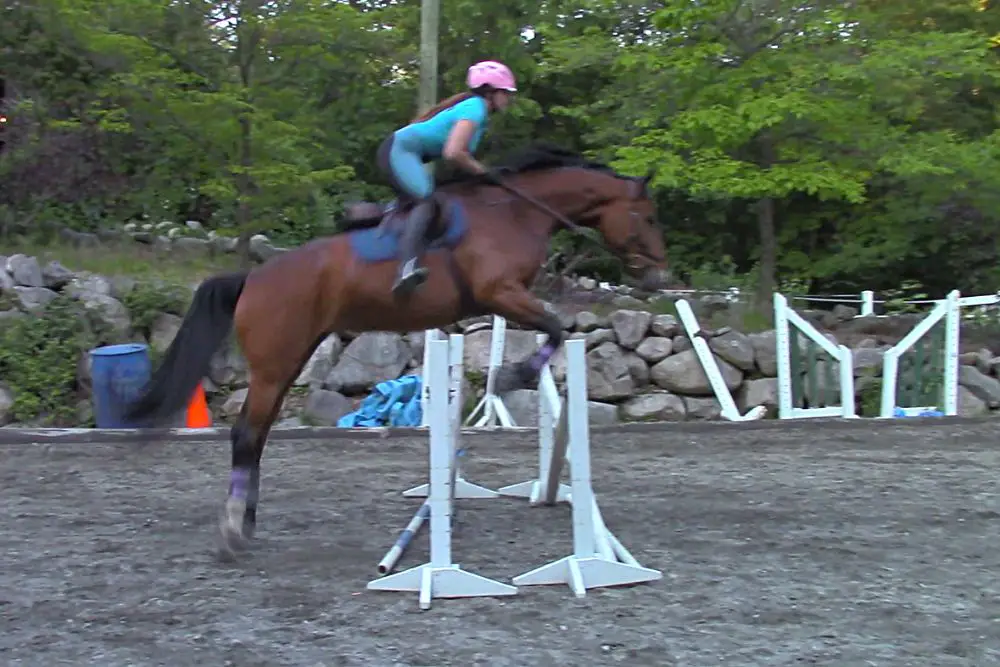
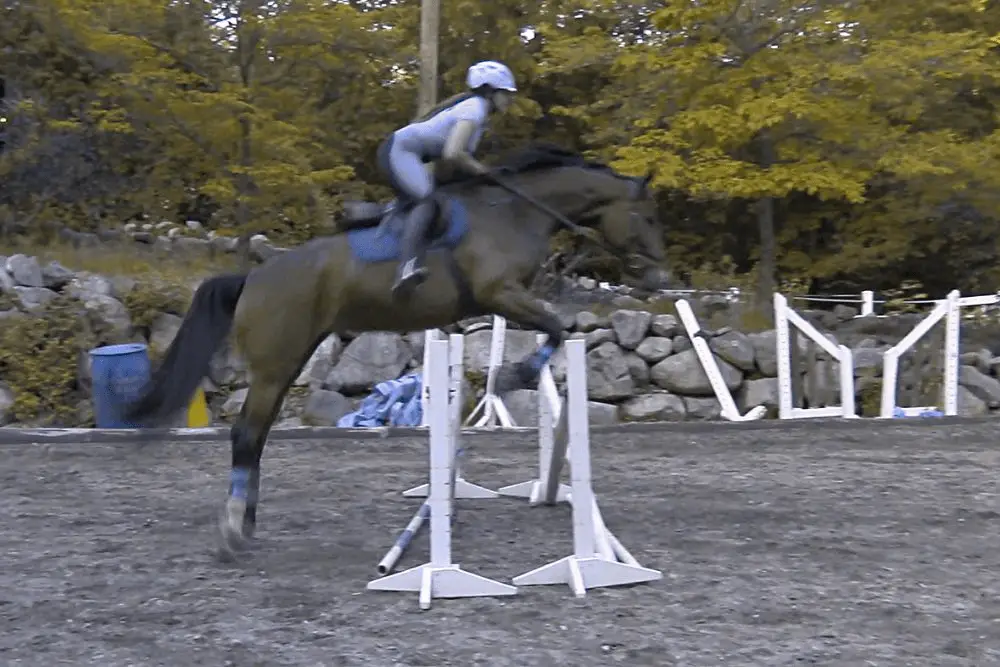
I’ve already discussed how horses cannot distinguish red or other related colors. So allow me to elaborate.
Because their eyes have photopigments, also called cones, horses can only see certain colors. We and horses can see color because of the cones. When light passes through the pupil, it is focused on the retina, which is composed of numerous layers of nerve cells that line the back of the eyeball, including rods and cones.
Cones are able to tell the difference between colors of light. Each cone is sensitive to a different color of light. In humans, we have three types of cones; red receptive cones, green receptive cones, and blue receptive cones. In horses, however, there are only green, more like yellow green, and blue receptive cones.
When all the colors are put together, our eyes can see millions of different colors. This includes horses, although the hues and variations are far more restricted and dull looking.
How Does a Horse See Colors? The Horse’s Perspective On Color

So you know now that there are only certain colors horses can see. Because of this they have a more difficult time distinguishing between some colors. This includes between the color red and green.
They don’t see red colors such as sub-shades of red like pink or orange (they see these colors in a different way).
Looking at the photo I shared above you can see that the red coat looks the same as what the horse would perceive as green. That is why the horse struggles to decipher from the two. Red tends to come out looking similar to green to the horse.
Horses see the world much different than us. Colors horses do see include shades of blue, yellow, and green. This is important to note when working with horses because the way they see obstacles (for example, jumps) is different from how we may see obstacles.
A horse might not notice a red jump as much as a bright yellow, blue or green one. Horses also see objects with contrasting colors to the ground more readily than tones that mix with the environment, such as ground poles.
Furthermore, researchers found that the horses had a lower risk of knocking down rails when the jump poles were painted with two or more different contrasting color tones rather than a single solid hue.
However, not only are horses are great at identifying contrast of color, which is useful for their survival, they also are quick to see changes from light to dark. They are very aware of shadows and movement, which can often cause their flight instinct to kick in.
Are There Colors That Horses Don’t Like or Are Afraid of?
There hasn’t been any solid scientific proof that all horses hate the same colors.
However, white is the most widely reported color that horses dislike or are terrified of.
Also, the little scientific research that has been done on this subject says that colors like yellow, white, black, and blue tend to make horses respond more negatively.
Although it is most likely the horse’s training that causes him to seem to dislike or prefer particular colors over others.
Therefore, an equine’s dislike for certain colors is often a taught trait that they pick up from their environment.
For example, if a horse has had a bad experience or been scared by a certain color, it is likely that the horse will associate that color with fear and avoid it.
What Colors Do Horses Prefer?
Although preference for certain colors is possible, there is little scientific evidence that horses tend to prefer one color over the next.
Some horses may seem to prefer colors that they can see better, yet most of the time, a clear “preference” for one color over the other is due to previous experiences or training methods.
There has been research done using different colored buckets filled with water to see which one horses would prefer. The horses were studied over eighteen days with six total subjects.
The colors included light blue, turquoise, light green, green, yellow, and red-toned buckets. The horses preferred the turquoise bucket first and then the lighter colored buckets.
However, in the seven-hour turnout, the buckets were shifted so that they would not be in the same place.
This could mean that the horses simply went to the bucket because it was the closest or most visible and therefore more convenient to access.
It is also important to note that science has proven that horses cannot differentiate between colors the same way people do, meaning that it would be difficult for them to establish a preference.
Horses don’t see colors the same way we do, yet they also see certain color shades that we can’t see. This difference is caused largely by the fact that the horse’s vision works differently from ours.
Not only is this applicable to their color vision but also to their range of view and how they perceive the world.
On one hand, horses can see better than us, but on the other, they have blind spots that need to be considered when working around them.
Can Horses See The Color Pink?
The short answer is no. Horses, like many other animals, cannot see red and pink is a reddish-purple color.
To understand why horses can’t see pink, you need to remember that horses have cones that can perceive 2 colors instead of the three that humans can see.
Horses can see blue and yellow (more of a yellow-green), they cannot see red, or any of the colors that contain the red coloration. Therefore, pink is out of the question for horses.
Can Horses See The Color Orange?
Orange is not one of the colors horses can see, because they are color blind to red, which is one of the two primary colors that create the color orange. Horses can see yellow, and orange ends up looking more like a dull yellow than a distinct color.
Can Horses See The Color Yellow?
Yes, yellow is one of the colors horses can see.
Can Horses See The Color White?
Yes horses can see the color white, or lack of color seeing as white is the absence of color.
Frequently Asked Questions About Vision in Horses
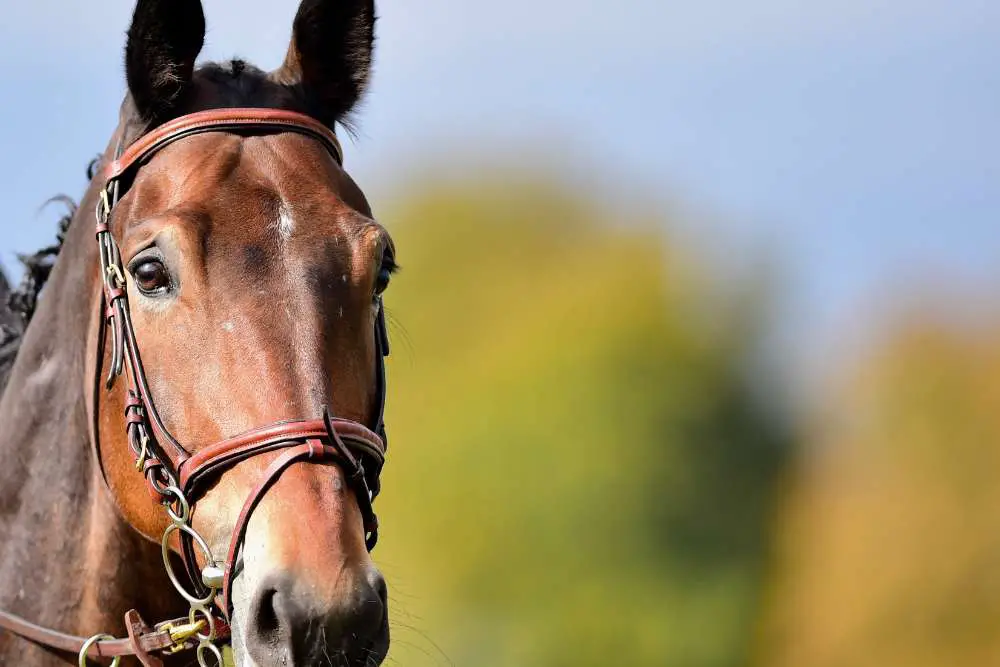
How Does Vision Work in Horses?
Looking into the anatomy of the equine eye, inside the horse’s retina, cone cells are responsible for detecting color. People have three different types of cones that detect red, yellow-green, and blue light (trichromatic vision).
Therefore, people can see three primary colors, which can mix together and allow us to see many different colors.
Meanwhile, horses have two types of cone cells in their retina: yellow-green and blue (dichromatic vision). Thus, although horses can see color, they see significantly fewer colors.
Horses also have monocular vision, which means that they see with one eye at a time.
This allows them to see movement from a further distance away, but limits their ability to process in the three-dimensional world.
Humans, on the other hand, have binocular vision, meaning that their brain processes information from both eyes at once.
However, horses do have the ability to switch to binocular vision in front of themselves using both eyes.
In addition, equines perform interocular transfer. This means that their brain connects between both hemispheres. This allows them to transfer information from one side of the brain to the other (and therefore eye to eye), meaning that the brain can memorize what it saw no matter which side it saw it on.
What is a Horse’s Focal Vision Like?
One of the most notable aspects about the equines’ eyes is that they are significantly larger than those of humans.
Yet the horse’s ability to establish differences between details while focusing on whatever is in their center of vision (also known as acuity) is poor, especially in comparison to humans.
Because their ciliary muscles aren’t very strong, horses have relatively poor “accommodation” in their eyes. This means that they can’t change the shape of the lens to clearly see things close up and far away.
However, the type of focus horses have varies from individual to individual. Some are more nearsighted (meaning they cannot see details until they get quite close), while others are more farsighted.
In essence, the horse has to be at least fifty percent closer than we do to see the same ‘detail’ as us. This is important to note when jumping obstacles, for example, as the horse sees what is in front as a blur.
What is the Horse’s Field of Vision Like?
A horse’s field of vision is larger than that of a human. Due to lateral eye placement (having one eye on each side of their head), horses have a spherical visual field when their head is level.
Thus, they can see almost 360 degrees around their body. Eyes on the side of the head, also allows them to have a 55- to 65-degree overlap from one eye to the other.
As a prey animal, this enables horses to detect predators on all sides of their bodies. When grazing, equines cannot see the grass that they are consuming, so they must rely on their whiskers to feel objects right underneath them.
This means that horses have blind spots directly in front of their nose and behind their tail. If a hand comes out of seemingly nowhere, above or below the level of his eye, it can startle a horse.
However, problems in the blind spot regions can be eliminated with a small head shift from the horse’s part, leaving the whiskers untrimmed so that they can use their senses, and approaching the animal carefully when working around areas where they cannot see.
What Is the Horse’s Depth Perception Like?
Contrary to popular belief, horses have excellent depth perception. Their ability to jump over fences and gallop on uneven terrain is in large part thanks to this ability.
Like humans, horses have stereoscopic vision. The reason why a horse may stop suddenly when they see a new object (this includes a change in ground color, shifts in terrain, or simply a different object) is because that is their instinctive reaction in order to ensure their own safety.
Can Horses See in The Dark?
A horse’s night vision is excellent, although compared to other animals such as cats, it is far from the best.
Studies in the lab have shown that horses are able to tell the difference between different shapes even in low light conditions, like on a dark, moonless night in the woods.
An equine eye has an increased amount of rods, allowing them to sense light and movement even when the outside world is dark. Also at the back of the eye is the tapetum lucidum a membrane behind the retina that can reflect light and help horses see better in the dark,.
In cases where their vision is limited by pitch darkness, horses can use their sense of smell to help them gain a sense of direction.
Learn more about horses seeing in the dark.
Do Horses Have Good Eyesight?
Generally speaking, yes, horses have good eyesight. They have particularly good color and peripheral vision.
As mentioned before, they can see a variety of colors and even shades of blue and green that people are unable to see. They also have a wider field of vision than humans, allowing them to see in any direction.
Although they do have blind spots in front of and behind them, a movement with the head allows horses to see in most areas. A disadvantage that they cannot correct is their poor acuity compared to that of humans.
Although the horse world has always been traditional (and therefore quite superstitious), equines have excellent color vision and good depth perception.
Horses have both monocular and binocular vision, which allows them to see all around themselves and have limited blind spots (which go away with a tilt of the head).
They may not be able to focus on details the same way that humans do, but their ability to see in the dark is quite good.
Yet, their eyesight is far from the best in all of the animal kingdom, which is why they must rely on other senses such as smell or touch in order to best ensure their survival.
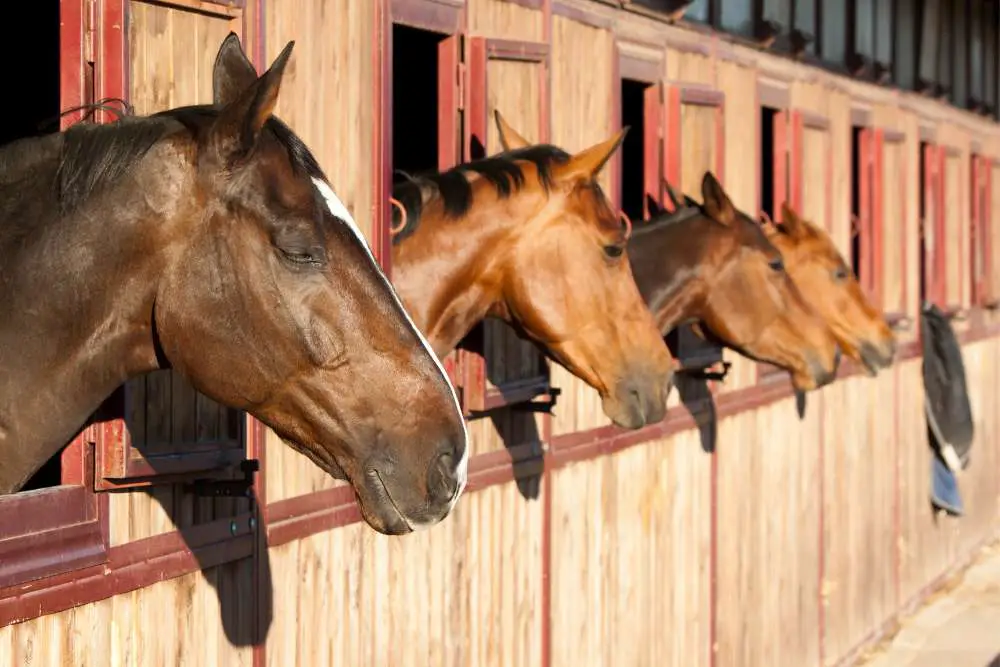
Conclusion About Horse Color Vision
It’s incredible to think that the world looks so different through horse eyes! To horses, the world is much more muted and dull than it is to us, with their limited ability to see color.
Horse vision can only see yellow, green and blue, and being dichromatic means that they won’t be able to pick up on bright, vibrant colors like we can.
It’s fascinating to think how differently horses perceive the world around them, and how much our vision shapes our experience of the world.
Cheers, Kacey
P.S. Did you like this article? Gallop over to:

